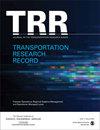Using a Proposed Risk Computation Procedure and Bow-Tie Diagram as a Method for Maritime Security Assessment
IF 1.8
4区 工程技术
Q3 ENGINEERING, CIVIL
引用次数: 0
Abstract
Terrorism, piracy, robbery, and cyber-threats on ships and at port facilities, as well as smuggling and drug trafficking through cargo and containers, are some of the international security problems for which national maritime security services must provide solutions. Cyber-attack is considered particularly important as it can be combined with all the other security vulnerabilities in the shipping industry. There is no extensive and in-depth literature for the risk acceptance criteria concerning maritime security. Basic information is drawn from other areas, such as civil aviation. It is necessary to standardize these criteria, as is the case with formal safety assessment, where practitioners know how to gather information, to make comparisons with previous experience, and to make decisions that are often based on experience from the past. The aim of the present study is to address the issue of maritime security through the development of a method applicable to the maritime industry that evaluates and manages maritime security-related risks. Security cost-benefit analysis and decision-making procedures will be required in the future. The proposed method uses the bow-tie diagram tool for the estimation of risk. A risk computation procedure is described after the application of a set of prevention barriers, which is based mainly on the accuracy of the definition of the probability and the contribution of each threat, as well as the accuracy of estimation of the effectiveness value of each prevention barrier for the same threat as defined by the user. Similarly, the risk computation for each consequence, after the application of a set of mitigation barriers, is based mainly on the accuracy of the definition of the risk value of each consequence as well as on the accuracy of the estimation of the effectiveness value of each mitigation barrier for the same consequence as defined by the user. The results of the risk computation appear in the bow-tie diagram providing a colored scheme of the risk values obtained for the top event and consequences after the introduction of the necessary prevention and mitigation barriers.Terrorism, piracy, robbery, cyber-threats, smuggling and drug trafficking etc., are some of the international security problems due to which the national maritime security services must provide solutions. There is no extensive literature for the risk acceptance criteria concerning maritime security and basic information is drawn from other areas. The aim of the proposed study is to develop a method applicable to the maritime industry that evaluates and manages maritime security related risks in a case of cyber-security. Security Cost-Benefit Analysis and Decision Making procedure will be required in the future. The proposed method uses the Bow-Tie diagram tool for the estimation of the risk. A risk computation procedure is described after the application of prevention barriers, which is based mainly on the accuracy of the definition of the Probability P i and the Contribution C i of each Threat ( i) as well as on the accuracy of the estimation of the Effectiveness value E ij , of each Prevention Barrier ( j) for the same defined Threat ( i), by the user. Similarly, the risk computation for each consequence, after the application of mitigation barriers, is based mainly on the accuracy of the definition of the Risk Value RV i of each Consequence ( i) as well as on the accuracy of the estimation of the Effectiveness value E ij , of each Mitigation Barrier ( j) for the same defined Consequence ( i), by the user. The results of the risk computation appear in the Bow-Tie diagram providing a coloured scheme of the obtained risk values for top event and consequences.基于风险计算程序和领结图的海上安全评估方法
针对船舶和港口设施的恐怖主义、海盗、抢劫和网络威胁,以及通过货物和集装箱进行的走私和贩毒,都是各国海事安全部门必须提供解决方案的一些国际安全问题。网络攻击被认为是特别重要的,因为它可以与航运业的所有其他安全漏洞相结合。关于海上安全的风险接受准则,目前还没有广泛深入的文献。基本信息来自其他领域,如民用航空。有必要将这些标准标准化,就像正式的安全评估一样,从业者知道如何收集信息,与以前的经验进行比较,并根据过去的经验做出决定。本研究的目的是通过开发一种适用于海事行业的方法来评估和管理海事安全相关风险,从而解决海事安全问题。未来将需要安全成本效益分析和决策程序。所提出的方法使用领结图工具进行风险估计。在应用一组预防屏障后,描述了一种风险计算过程,该过程主要基于对每种威胁的概率和贡献定义的准确性,以及对用户定义的同一威胁的每个预防屏障的有效性值估计的准确性。同样,在应用了一组缓解障碍之后,每个后果的风险计算主要基于对每个后果的风险值定义的准确性,以及对用户定义的相同后果的每个缓解障碍的有效性值估计的准确性。风险计算的结果显示在领结图中,该领结图提供了在引入必要的预防和缓解障碍后为最高事件和后果获得的风险值的彩色方案。恐怖主义、海盗、抢劫、网络威胁、走私和贩毒等国际安全问题是各国海上安全部门必须提供解决方案的问题。关于海上安全的风险接受标准没有广泛的文献,基本信息来自其他领域。拟议研究的目的是开发一种适用于海事行业的方法,以评估和管理网络安全情况下的海事安全相关风险。未来将需要安全成本效益分析和决策程序。提出的方法使用蝴蝶结图工具对风险进行估计。在应用预防屏障后,描述了一个风险计算过程,该过程主要基于对每个威胁(i)的概率pi和贡献ci的定义的准确性,以及用户对同一定义的威胁(i)的每个预防屏障(j)的有效性值eij的估计的准确性。同样,在应用缓解障碍后,每个后果的风险计算主要基于每个后果(i)的风险值RV i定义的准确性,以及用户对相同定义的后果(i)的每个缓解障碍(j)的有效性值eij估计的准确性。风险计算的结果显示在领结图中,该领结图提供了获得的顶级事件和后果的风险值的彩色方案。
本文章由计算机程序翻译,如有差异,请以英文原文为准。
求助全文
约1分钟内获得全文
求助全文
来源期刊

Transportation Research Record
工程技术-工程:土木
CiteScore
3.20
自引率
11.80%
发文量
918
审稿时长
4.2 months
期刊介绍:
Transportation Research Record: Journal of the Transportation Research Board is one of the most cited and prolific transportation journals in the world, offering unparalleled depth and breadth in the coverage of transportation-related topics. The TRR publishes approximately 70 issues annually of outstanding, peer-reviewed papers presenting research findings in policy, planning, administration, economics and financing, operations, construction, design, maintenance, safety, and more, for all modes of transportation. This site provides electronic access to a full compilation of papers since the 1996 series.
 求助内容:
求助内容: 应助结果提醒方式:
应助结果提醒方式:


